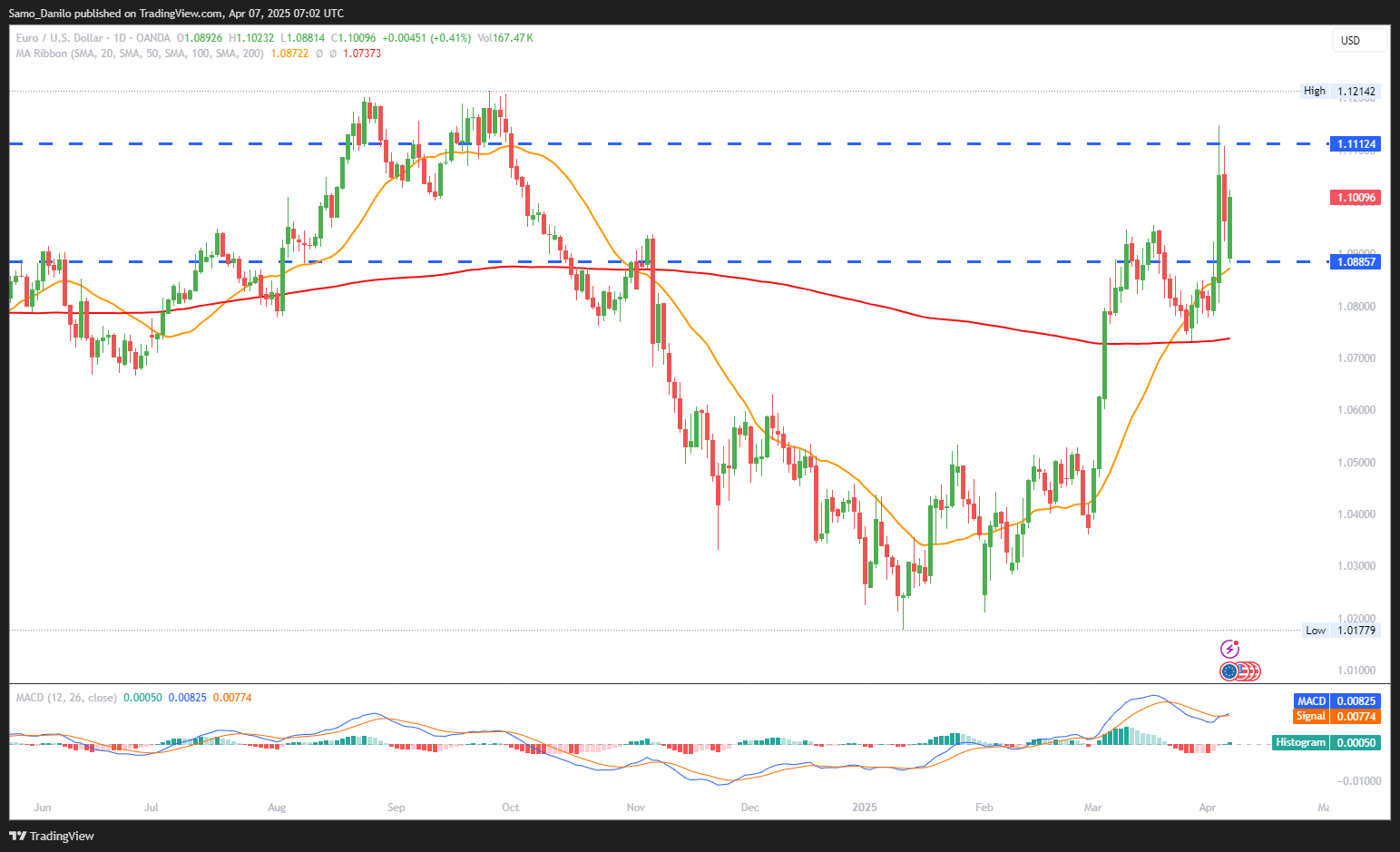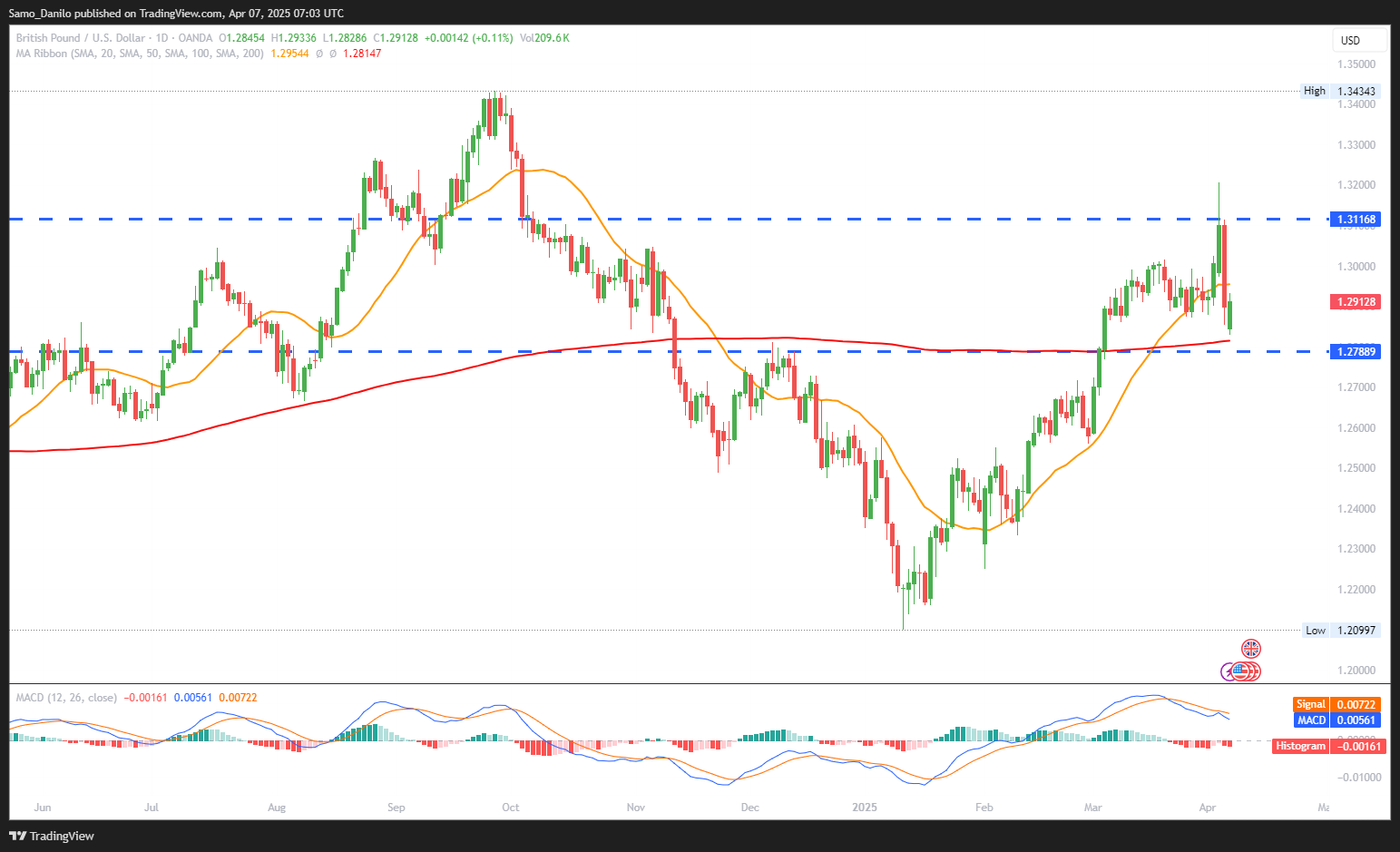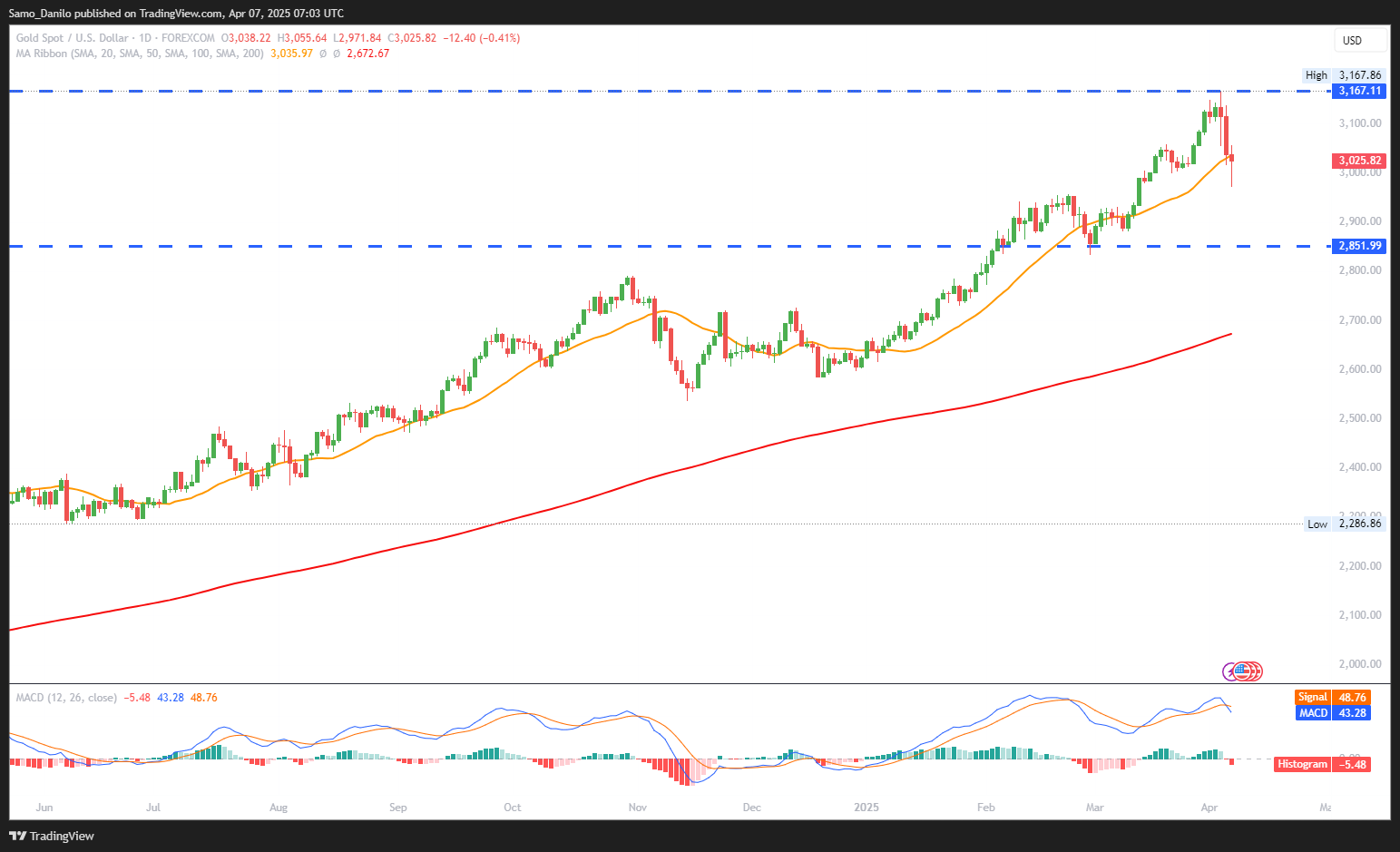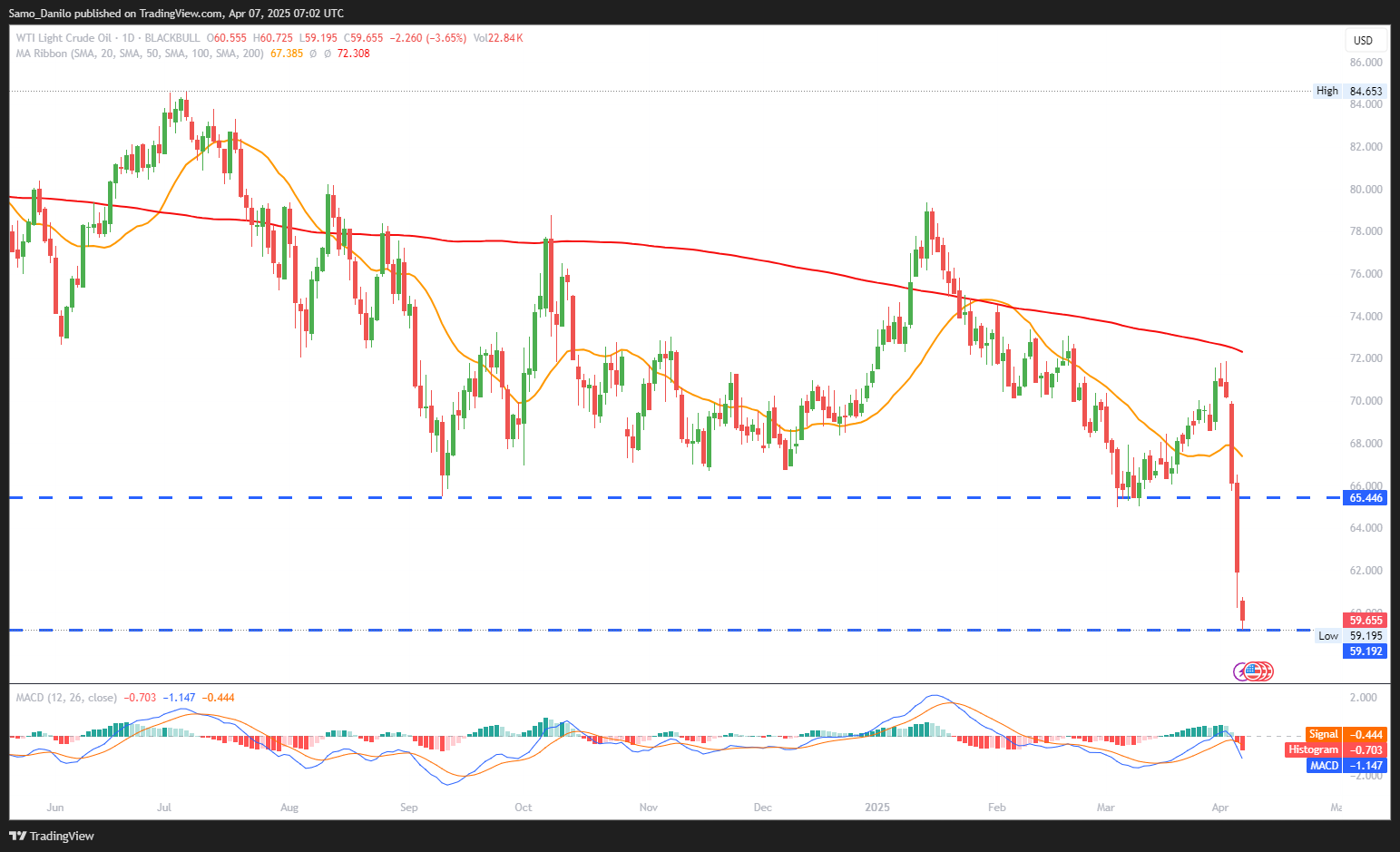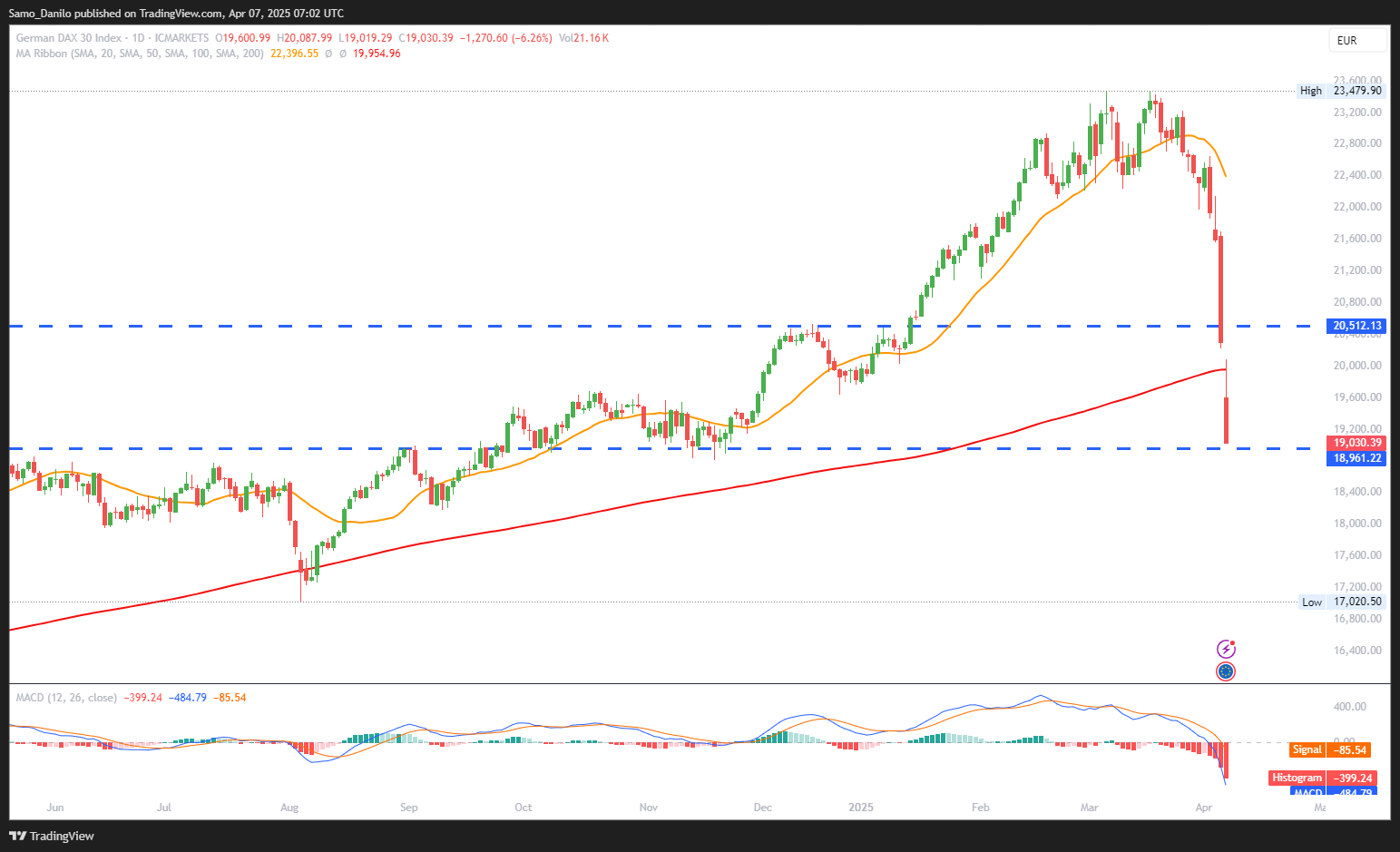EURUSD
- EUR/USD Price: The EUR/USD pair climbed to 1.1146 mid-week, marking its highest level since September 2024, before easing to around 1.1010 on Friday morning. The move was driven by broad US Dollar weakness, although profit-taking and uncertainty over tariffs have since weighed on momentum.
- ECB's Stournaras: ECB policymaker Yannis Stournaras cautioned that Trump’s tariffs could lead to a large demand shock in the Eurozone, estimating a potential hit of 0.5 to 1 percentage points on growth, per the Financial Times.
- EU Signals: EU Commissioner Stéphane Séjourné confirmed that a response list of retaliatory tariffs is imminent.
- Spain's Cuerpo: Spain's Economy Minister Cuerpo stressed that the EU is open to dialogue, but won't be naive, emphasizing a firm yet diplomatic stance.
- Germany’s Inflation: German HICP inflation slowed to 2.3% YoY in March, slightly below expectations, suggesting that price pressures may be easing, which could influence ECB policy discussions in the coming weeks.
Closing statement: The EUR/USD outlook remains cautiously bullish, supported by USD weakness and ECB rate cut speculation, but geopolitical and trade tensions continue to pose downside risks. Traders should watch for escalations in EU-US tariff tensions and ECB commentary for next moves.
GBPUSD
- GBP/USD Price: The GBP/USD pair bounced near the 1.2830 area early Monday, pausing its decline from last week’s six-month peak, as dip-buying interest emerged amid broader market caution.
- BoE Policy: The British Pound is underpinned by expectations that the Bank of England (BoE) will ease more gradually than the US Federal Reserve, offering a relative yield advantage that may help limit deeper losses in the pair.
- UK Housing Data: Halifax reported a 0.5% MoM drop in UK house prices in March, missing forecasts of a 0.1% increase. The lender noted that earlier gains in January were partly driven by buyers aiming to beat the March stamp duty deadline.
- US Jobs Data: The US Nonfarm Payrolls report showed 228K new jobs added in March, beating the 135K estimate. However, softer wage inflation and a rise in the Unemployment Rate to 4.2% offered a mixed signal, tempering aggressive Fed rate hike bets.
- Data Ahead: Market participants now turn to this week’s FOMC Meeting Minutes and March CPI release, which could provide fresh insights into the Fed’s next policy steps and set the near-term tone for GBP/USD.
Closing statement: While GBP/USD remains vulnerable near recent lows, relative BoE hawkishness and softening US inflation risks may provide modest upside potential. Watch for US CPI and Fed commentary to shape short-term direction.
XAUUSD
- XAU/USD Price: Gold prices reversed an earlier slide to a three-week low during the Asian session, finding support as persistent global recession fears kept investors inclined toward safe-haven assets, though follow-through buying remains modest.
- PBOC Gold Reserve: Latest data from the People’s Bank of China (PBOC) revealed a fifth consecutive monthly increase in state gold reserves, reinforcing demand-side support for gold amid escalating geopolitical and trade risks.
- China Tariffs: Beijing announced a 34% retaliatory tariff on all US imports in response to the April 2 "Liberation Day" tariffs imposed by Trump, intensifying trade tensions and adding to the bullish case for gold as a hedge against policy uncertainty.
- Trump's Statement: In a late Sunday address, President Trump dismissed any chance of a trade deal with China unless the US trade deficit is resolved, adding that “sometimes you have to take medicine” — a remark that deepened market unease and further fueled gold’s safe-haven appeal.
- GS Forecast: Gold is also buoyed by shifting rate expectations, as Goldman Sachs now sees 130 bps in Fed rate cuts for 2025, up from 105 bps, driven by the expected economic fallout of the tariff war and deteriorating macroeconomic outlook.
Closing statement: Gold remains well-supported amid mounting trade conflict, central bank gold buying, and growing recession fears. With rate cut expectations rising, the bias for XAU/USD remains upward, even if near-term moves are tempered by technical consolidation.
CRUDE OIL
- Crude Oil Price: West Texas Intermediate (WTI) crude oil continues its decline, trading near $60.00 in early Monday European trade. The drop reflects growing fears that Trump’s aggressive global tariffs will slow global growth, dampening oil demand expectations.
- Tariff Tensions: Markets are increasingly pricing in the risk that a prolonged trade war could sharply reduce economic activity, both in the US and abroad. Concerns over demand destruction are placing downward pressure on oil prices, with risk-off sentiment dominating.
- China's Response: In response to the tariff shock, China is reportedly preparing frontloaded stimulus, per Bloomberg. Policymakers met over the weekend to explore stabilization measures, signaling concern about the economic hit and potential mitigation through fiscal and monetary tools.
- OPEC+ Announcement: Adding to the bearish backdrop, OPEC+ unexpectedly raised its planned production increase to 411,000 bpd for May, up from 135,000 bpd. The announcement pressures prices further as supply is set to expand just as demand outlook dims.
- CPI Data: Attention now turns to the upcoming US CPI inflation print on Thursday, which could influence expectations around Fed policy, and by extension, demand forecasts. A hotter-than-expected number might rekindle fears of stagflation, weighing on energy markets.
Closing statement: Crude oil remains under sustained selling pressure amid surging macroeconomic risk, supply increases, and fears of demand destruction. Unless macro data or geopolitical developments shift sentiment, WTI may remain vulnerable to further downside in the near term.
DAX
- DAX Price: On April 4, the DAX plunged 4.95% following China’s announcement of 34% retaliatory tariffs, highlighting mounting fears of a full-blown global trade war. The index closed the week down 8.1%, marking its worst weekly performance since February 2022.
- German Factory Orders: Latest data shows factory orders in Germany stalled in February, offering no rebound after a 7% MoM slump in January. Economists had expected a 3.5% bounce, but continued weakness raises red flags about the industrial outlook.
- Industrial Output: Germany’s industrial production dropped 1.3% MoM in February, confirming a return to contraction in the sector. The decline suggests underlying structural weakness, further aggravated by external pressures like tariffs and global demand softening.
- Trade Surplus: Germany’s February trade surplus stood at EUR17.7B, just under the EUR17.8B expected, but still higher than January’s EUR16B. Despite the relatively solid surplus, weaker export demand amid rising global trade tensions remains a concern.
- Day Ahead: With no major releases scheduled today, focus shifts to central bank speakers, including ECB’s Cipollone and Fed’s Kugler. Markets may look for guidance on rate policy and macro risk assessment amid the turbulent backdrop.
Closing statement: The DAX is under significant pressure due to trade war escalation, domestic industrial stagnation, and souring investor sentiment. Unless macro data surprises to the upside or trade tensions ease, downside risks are likely to persist in the near term.
